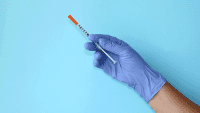Introduction
Conflict resolution among nurses is a significant challenge within clinical, academic, and care-delivery settings. Inherent stress secondary to challenges in staffing, resources, and compassion fatigue can precipitate or augment conflict. Historically, nurses have been provided few avenues for acknowledgment, support, process remediation, or conflict resolution. Nurses are leaving the profession feeling under-cared for and under-valued, which often is more stressful than the burden of the work itself (Johnston et al., 2016). When measures of “nurse intention” to leave units of Critical Care were explored, exemplars of “quality of the work environment, nature of working relationships and traumatic/stressful workplace experiences” emerged as significant factors (Khan et al., 2019). With the advent of the COVID-19 pandemic, behavioral health support for frontline workers has also been stressed (Tri-Council for Nursing, 2020). The provision of administrative acknowledgment and action is now more than ever a necessity, yet nurses must first learn to consistently love, value, and support each other to navigate new pathways to caring conflict resolution.
Significance
Through consistent utilization of Caring Science and the Caritas Processes (Watson, 2008, p.31) a Caritas Conflict Resolution Model can be applied to help unify and resolve differences, decrease stress, and generate a caring, positive environment. Facilitating communication and conflict resolution through a caring environment can improve the culture and outcomes of professional settings. The Caritas Conflict Resolution Model implements Caritas Processes in an academic or clinical setting focusing on Caritas Processes #1, #2, #4, #5, and #8 (Watson, 2008), described below.
- CP #1—”The Formation of a Humanistic-Altruistic System of Values”
- CP #2 – “Being Authentically Present, Enabling and Sustaining the Faith, Hope, and Belief System of Self and Other”
- CP #4 – “Developing and Sustaining a Helping, Trusting, Caring Relationship”
- CP #5 – “Being Present To, and Supportive of, The Expressions of Positive and Negative Feelings”
- CP #8 – “Creating a Healing Environment at All Levels”
Purpose
The Caritas Conflict Resolution Model was created to support students in setting personal and professional goals, generating discussions about conflict and conflict resolution, and applying caring conflict resolution in academic and clinical areas.
Setting and Participants
Two classes of twenty-five Nursing Students participated in a classroom setting.
Project Description/Process: Nursing Students were placed in small groups and asked to generate and analyze a real conflict. Using Caritas Processes #1, 2,4, 5, and 8 as a framework, students developed a role-play situation, incorporating the specific processes into a conflict resolution pathway. After role-playing, the conflict scenario, observations, and feedback were shared with each other within a unified kind, safe and loving context. For example, Caritas Process #1 emphasizes “practicing loving-kindness and equanimity for self and other” (Watson, 2008, p. 31).
Projected Outcomes
Nursing Students will be expected to trial their newly applied Caring Science knowledge outside of the didactic classroom setting in clinical, work, and patient-care settings. If loving-kindness can be shared, adapted, and celebrated within a closed, academic setting, it is then hoped there can be an application for the novice nurse with the transition into practice.
Project Evaluation
Nursing Students remained goal-oriented and naturally auto-corrected other students who strayed from consistent use of the Caritas Processes. There was widespread interest and engagement with the exercise. Students were able to realize that caring conflict resolution was possible within a framework of all team members feeling they belonged and were valued.
Future Direction
In addition, the utility of this project can be shared with healthcare organizations that employ nurses. Academic institutions retain close relationships with the health-care community and workplaces may subsequently be interested in providing an organization-wide commitment to adopting a new culture of Caring Science generated by education and application of the Caritas Processes. There is a vested interest in all community organizations that serve the public and the nurses who have a true opportunity to realize their dream of making a difference.
Acknowledgments
Thanks to Jean Watson, PhD, RN, AHC-BC, FAAN, for her simple yet profound life scripting of caring; Jan Anderson, EdD, RN, AHN-BC, Caritas Coach®, for her direction and support; and Unitek Brookline College for the opportunity to study and promote Jean Watson’s Caring Science.
References
Johnston, D., Bell, C., Jones, M., Farquharson, B., Allan, J., Schofield, P., Ricketts, I., & Johnston, M. (2016). Stressors, appraisal of stressors, experienced stress and cardiac response: A real-time, real-life investigation of work stress in nurses. Annals of Behavioral Medicine, 50(2), 187–197. https://doi-org.libproxy.unm.edu/10.1007/s12160-015-9746-8
Khan, N., Jackson, D., Stayt, L., & Walthall, H. (2019). Factors influencing nurses’ intentions to leave adult critical care settings. Nursing in Critical Care, 24(1), 24–32. https://doi-org.libproxy.unm.edu/10.1111/nicc.12348
Tri-Council for Nursing. (2020, Dec. 3). Tri-Council for Nursing Statement on the Status of the U.S. Health Care Workforce during the COVID-19 pandemic. https://www.aacnnursing.org/Portals/0/PDFs/Position-Statements/12-3-20-Statement-Health-Care-Workforce-COVID-19.pdf
Watson, J. (2008). Nursing: the philosophy and science of caring (Rev. ed). University Press of Colorado.
























